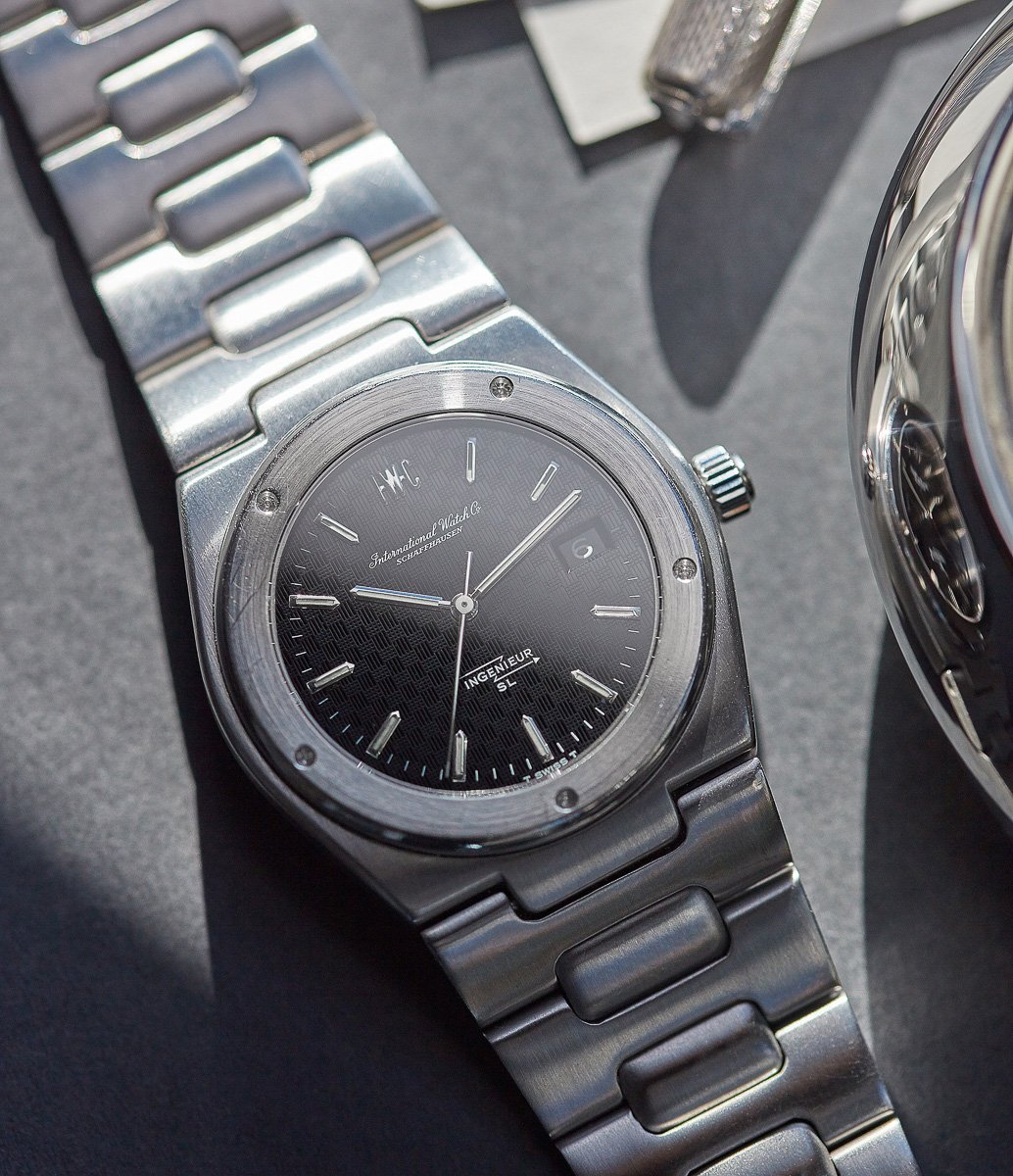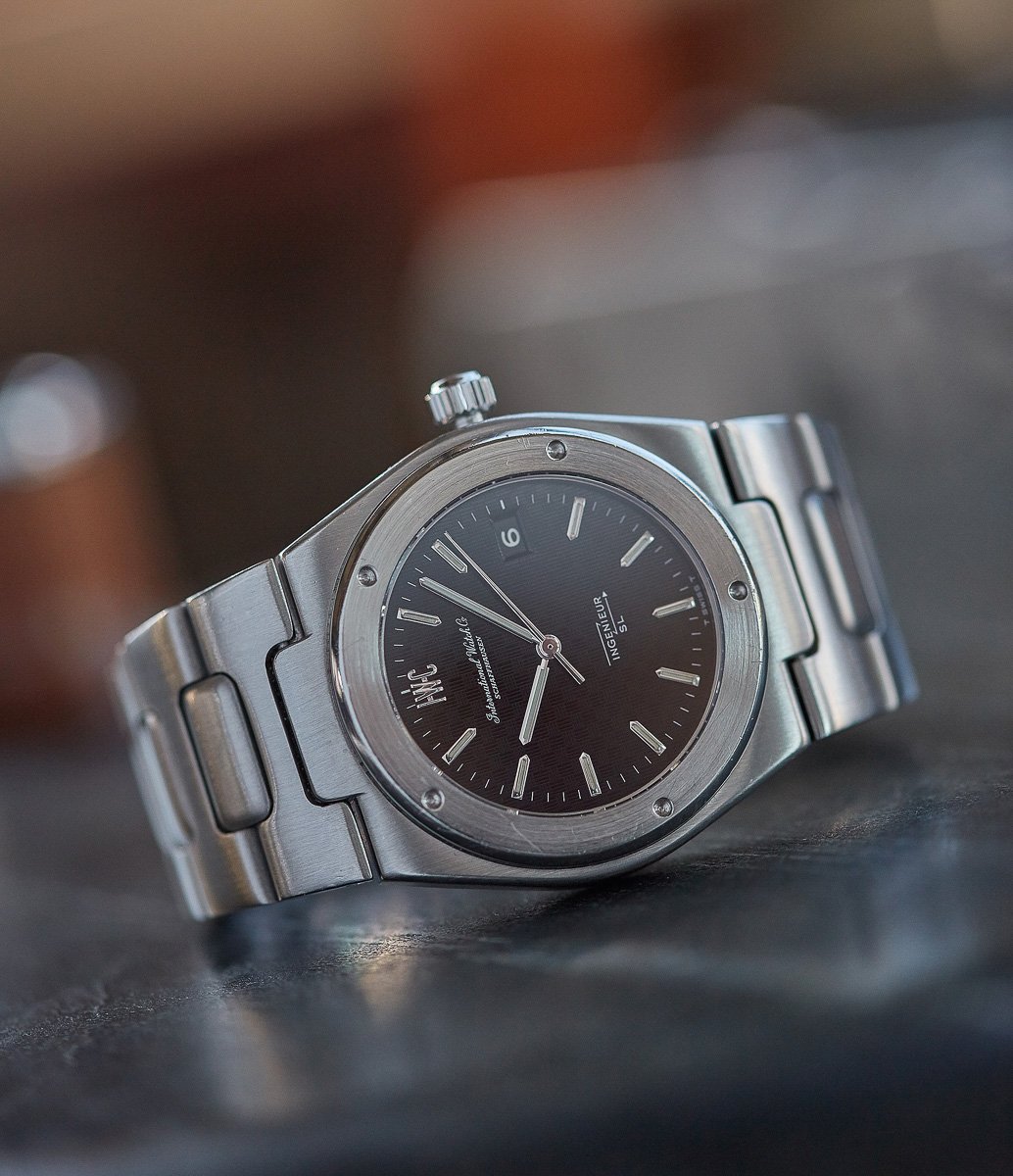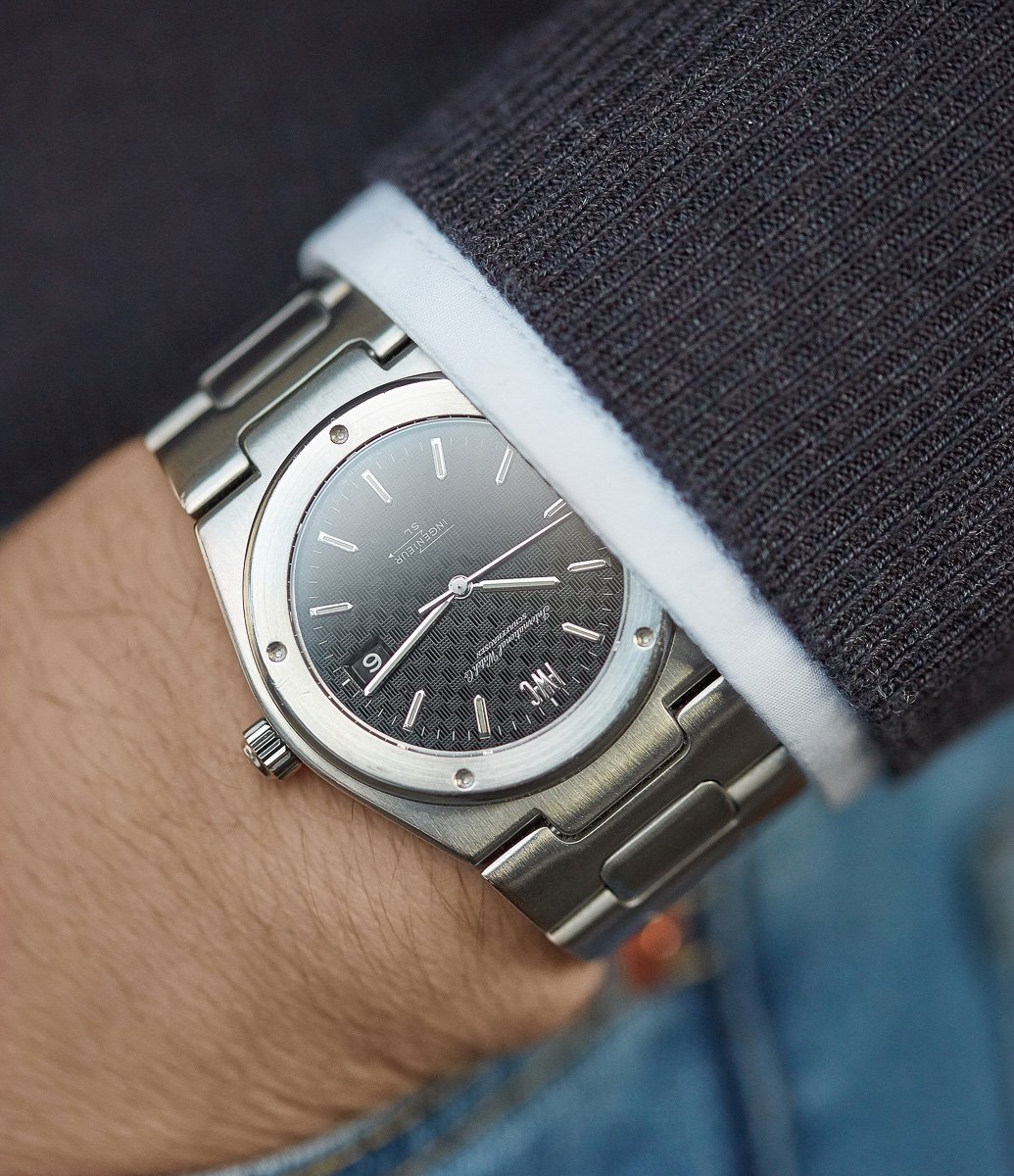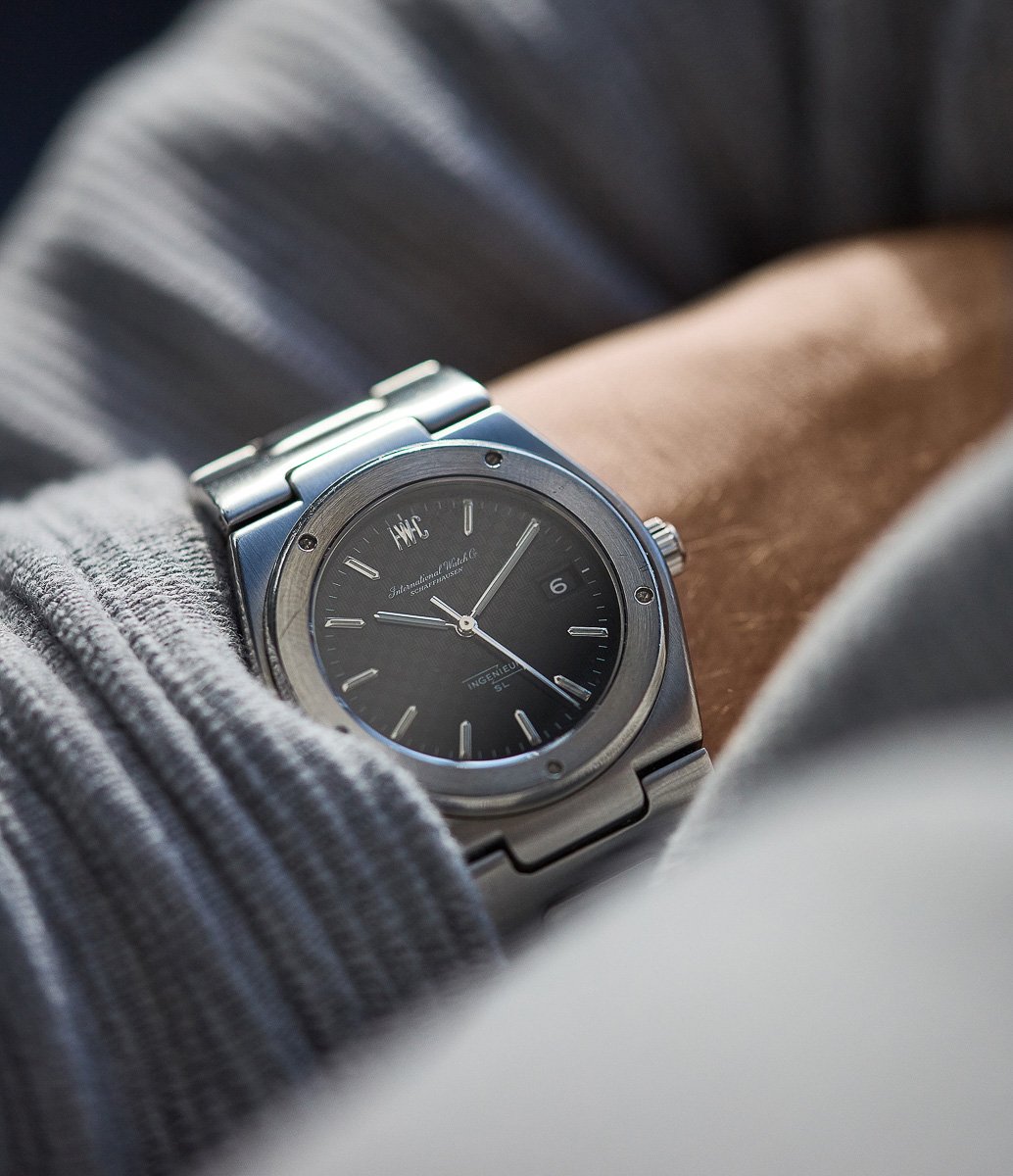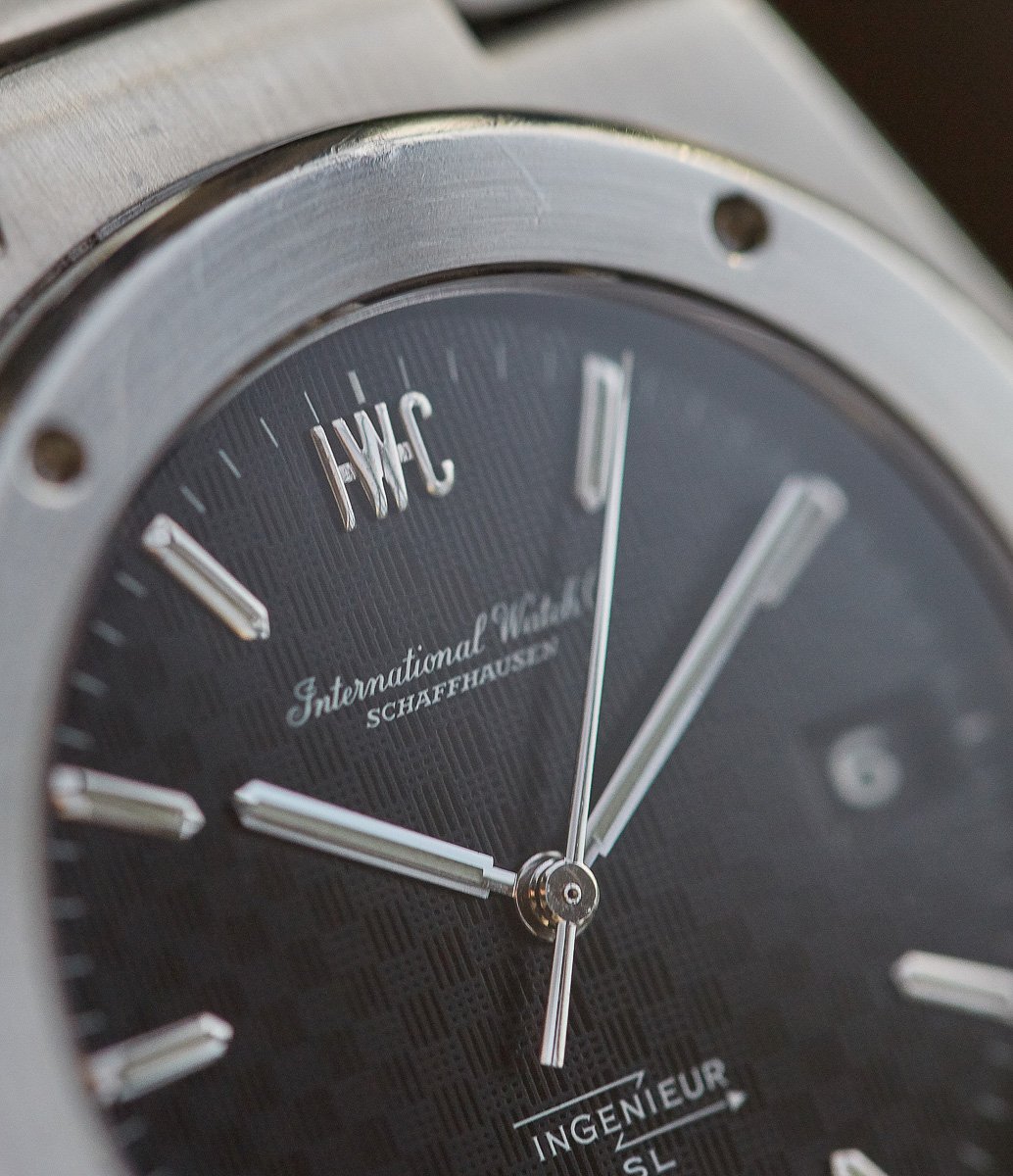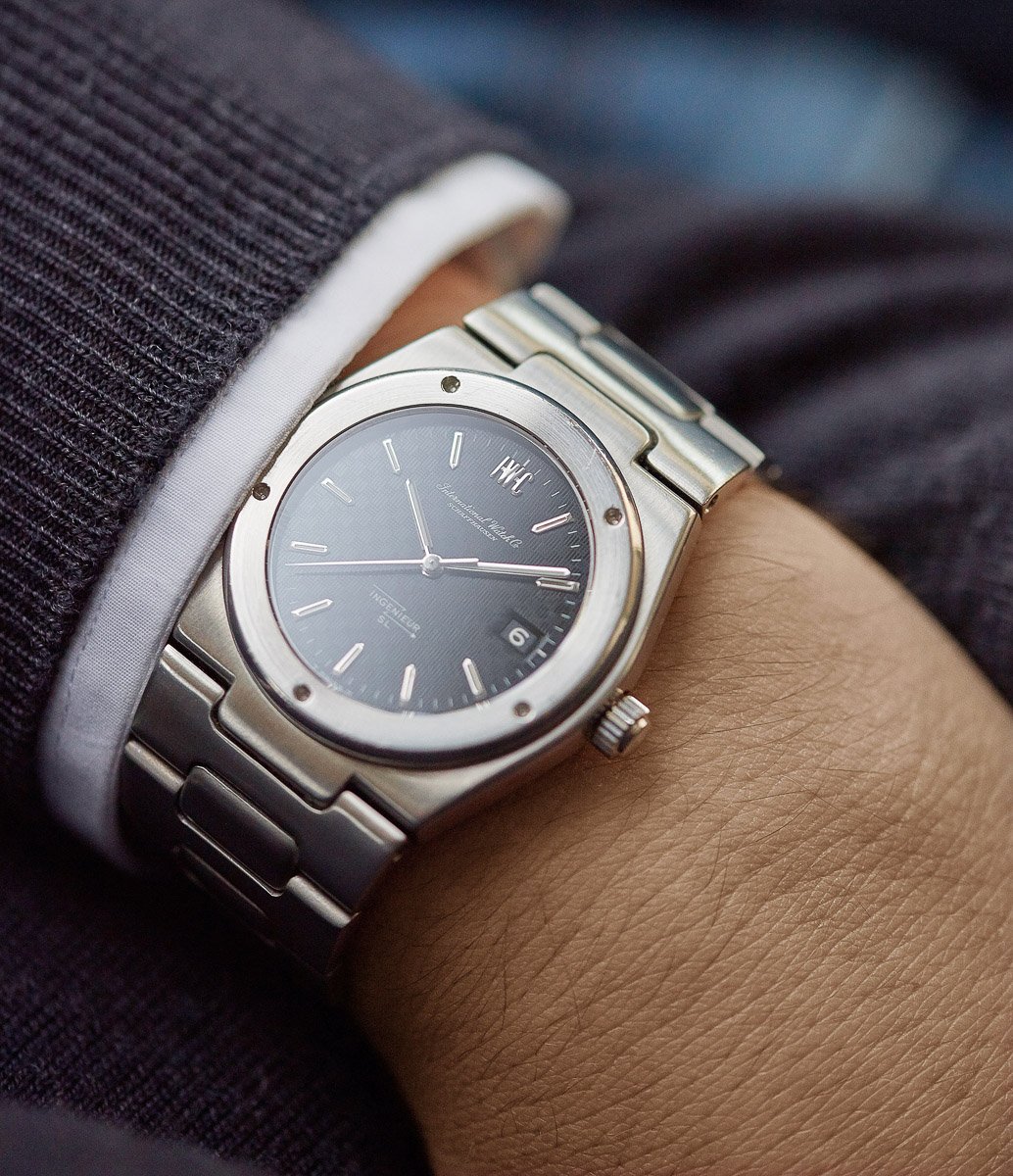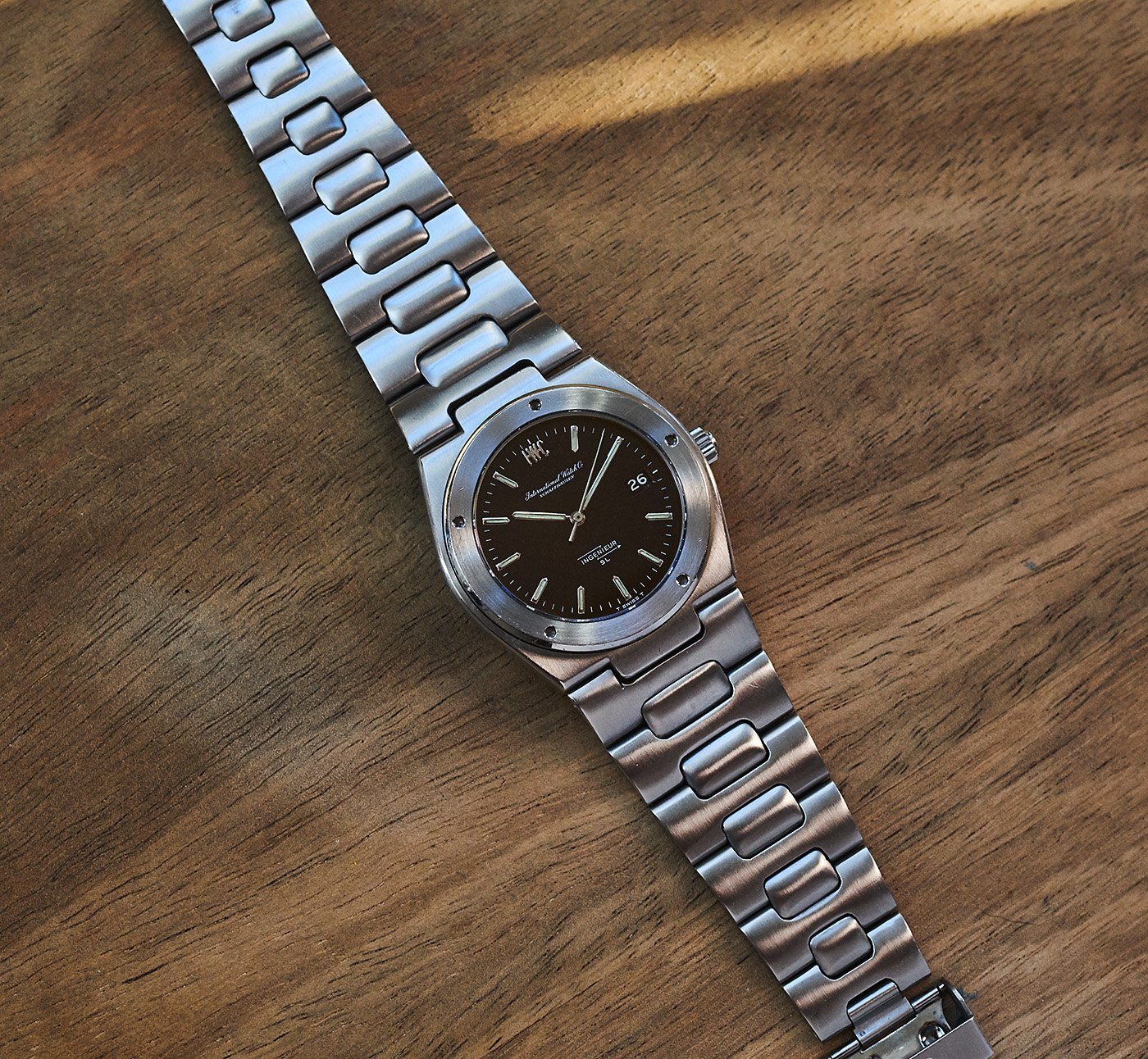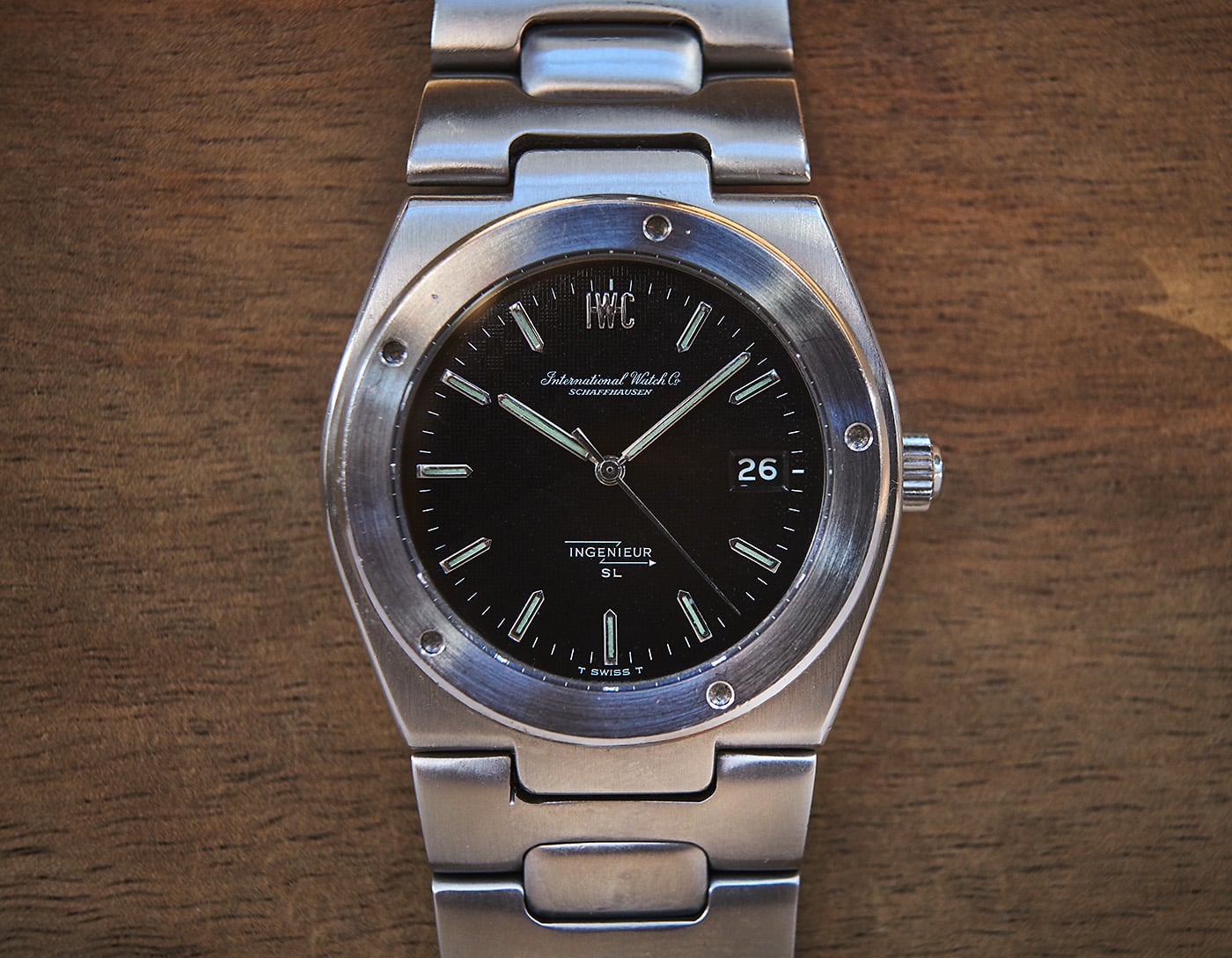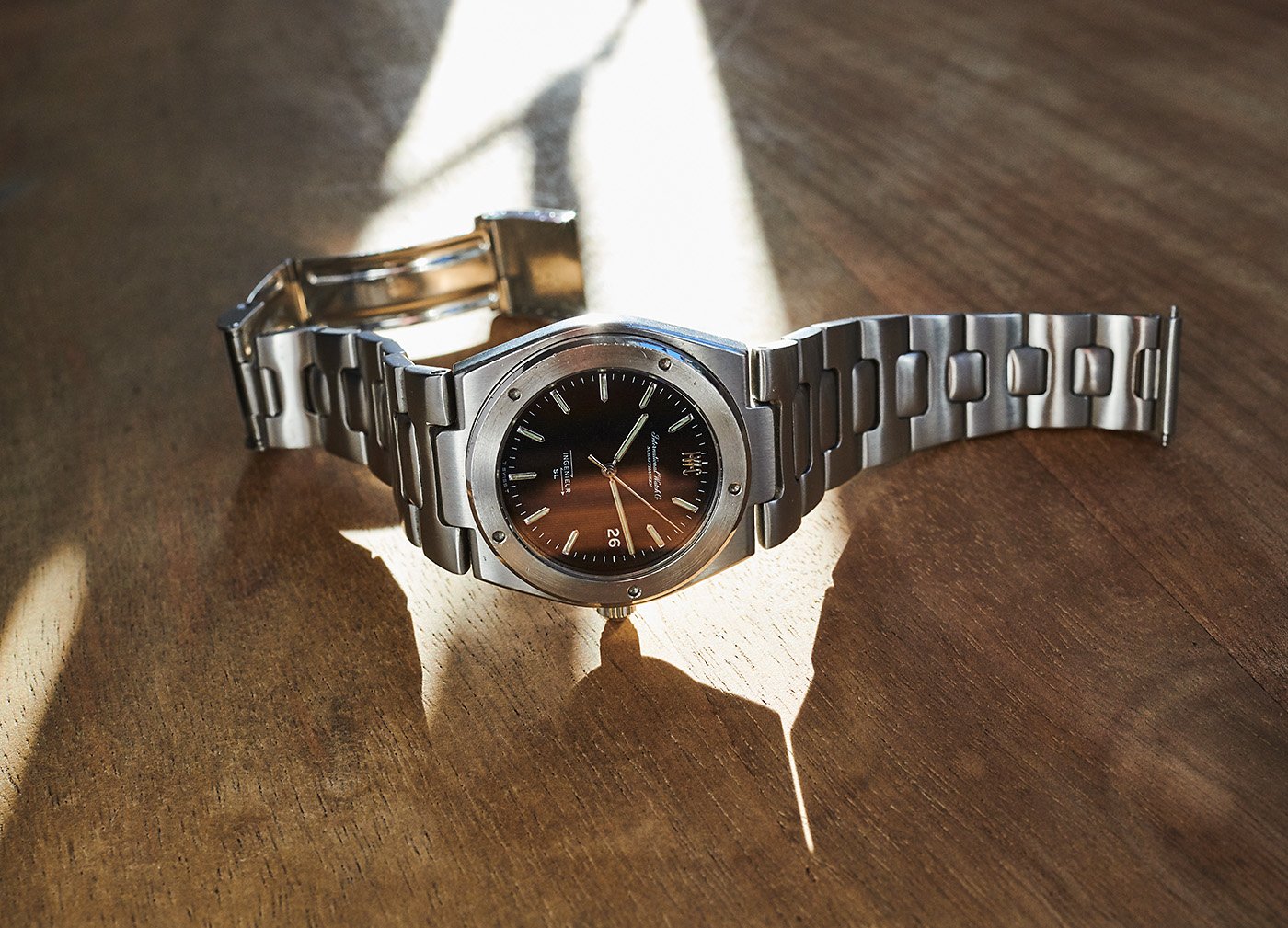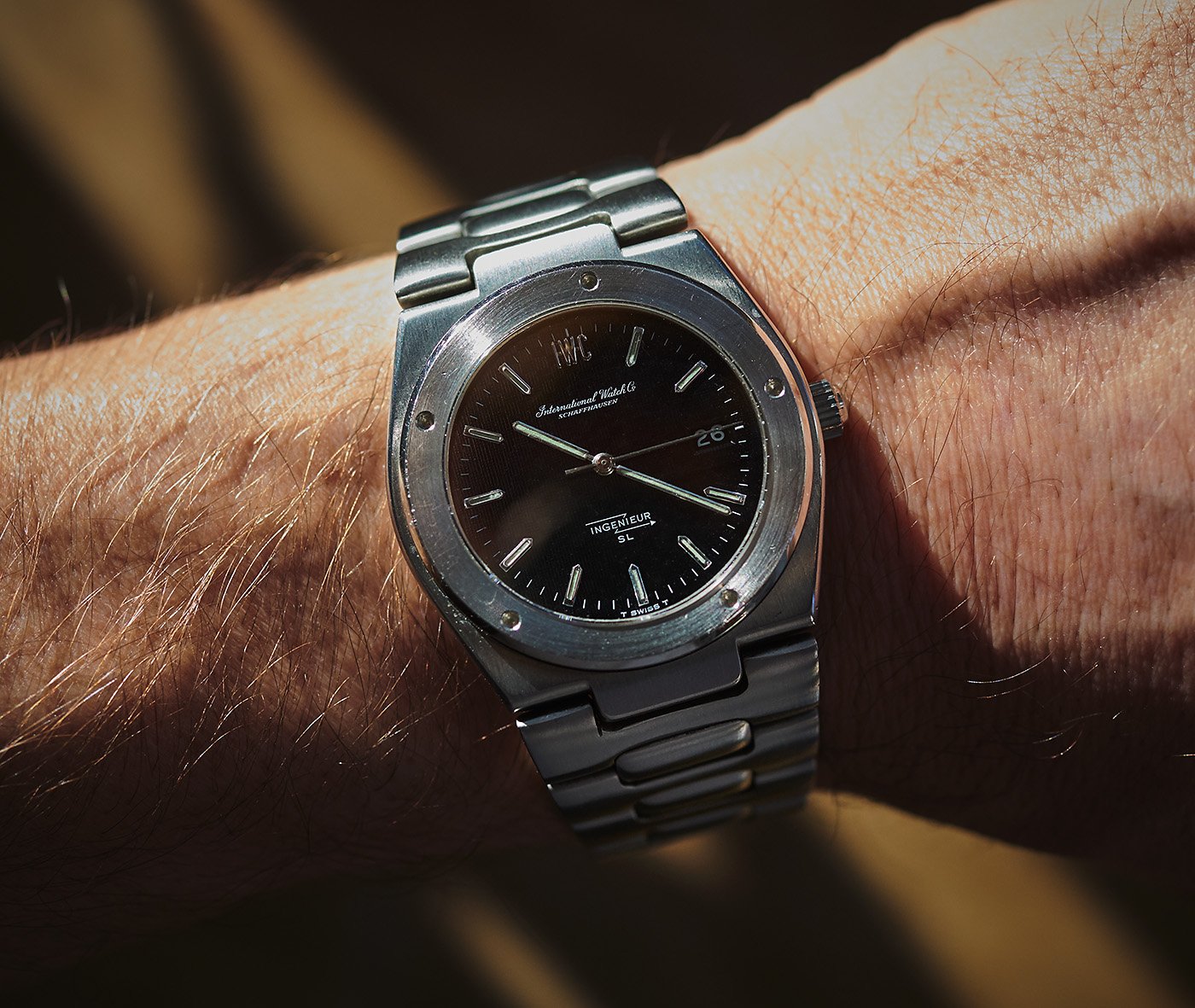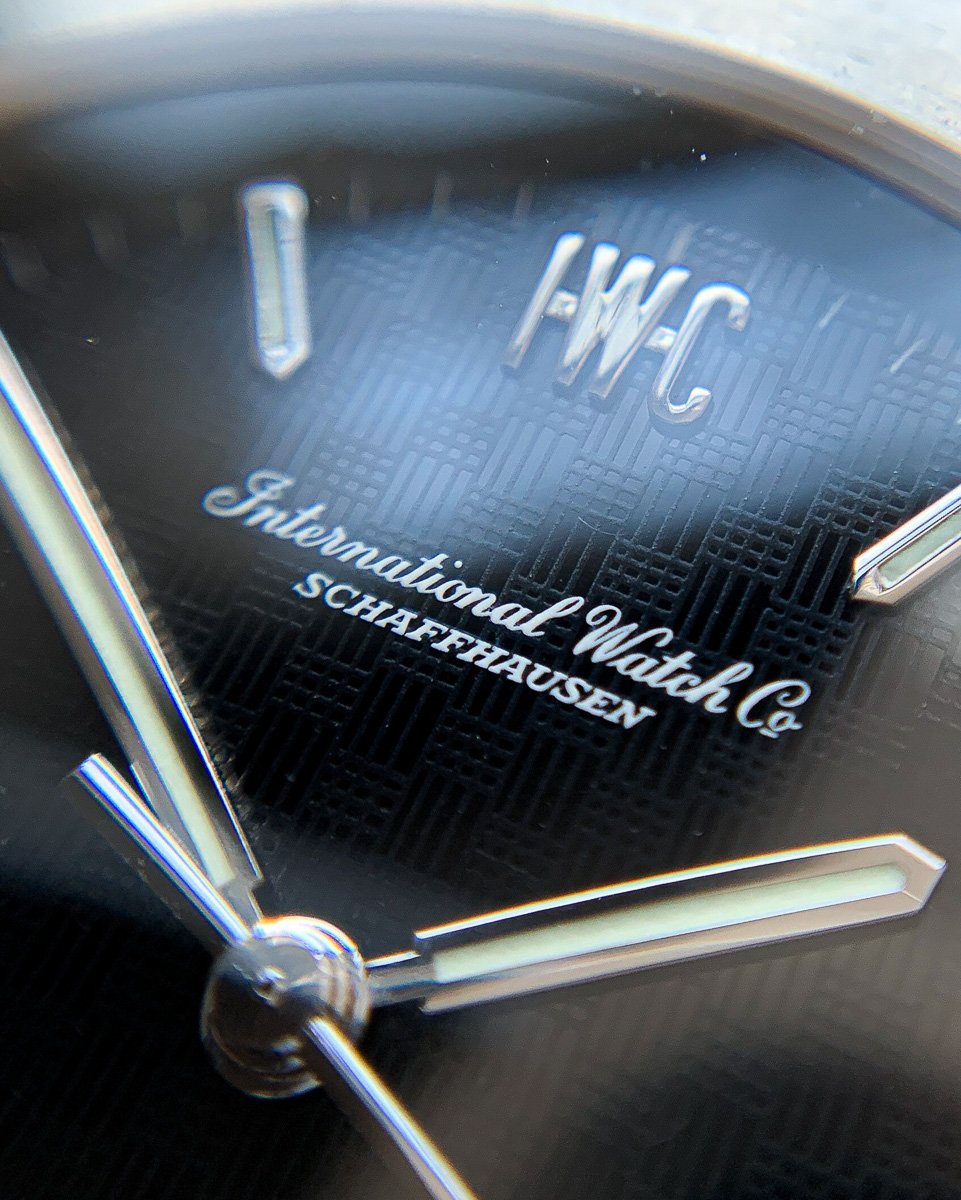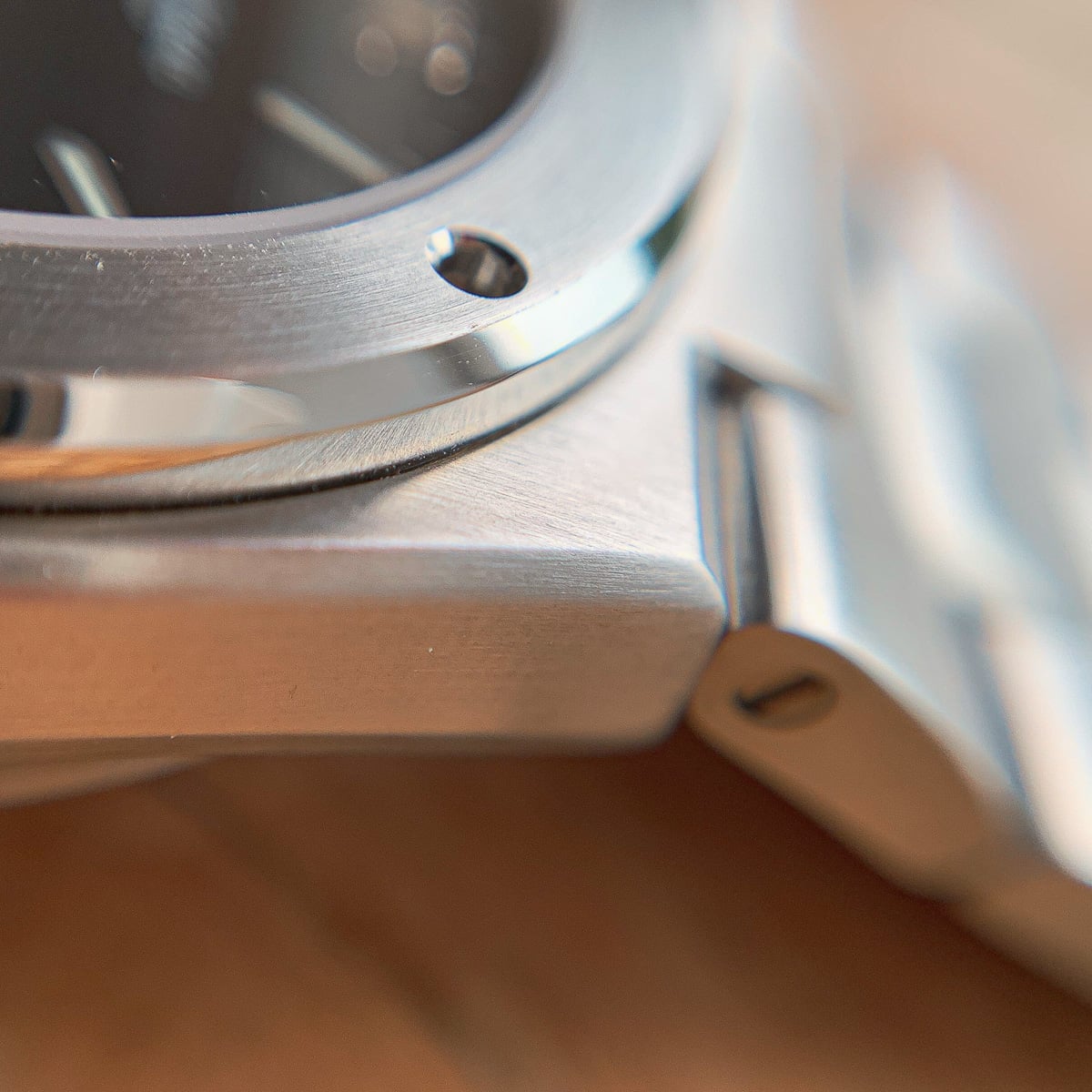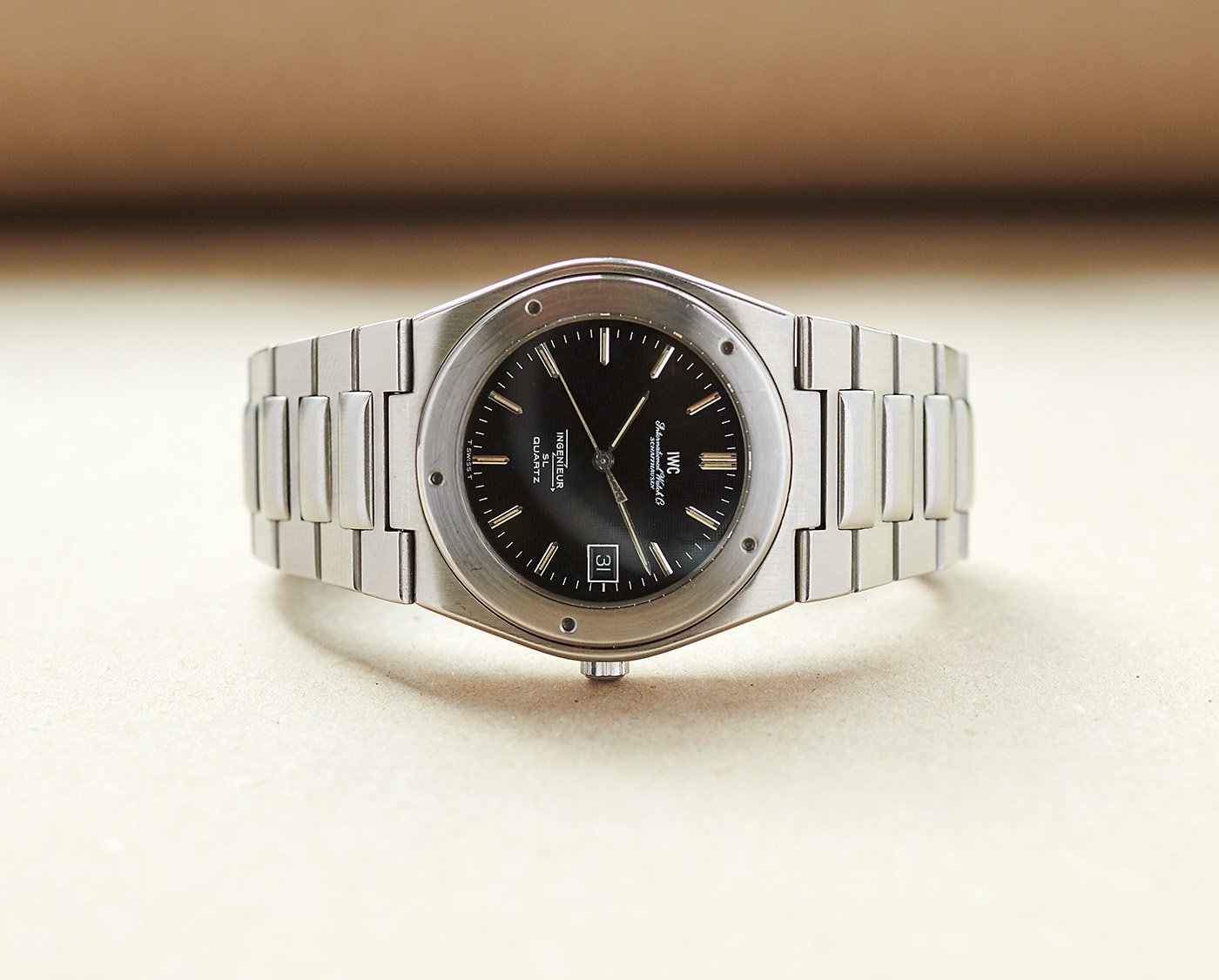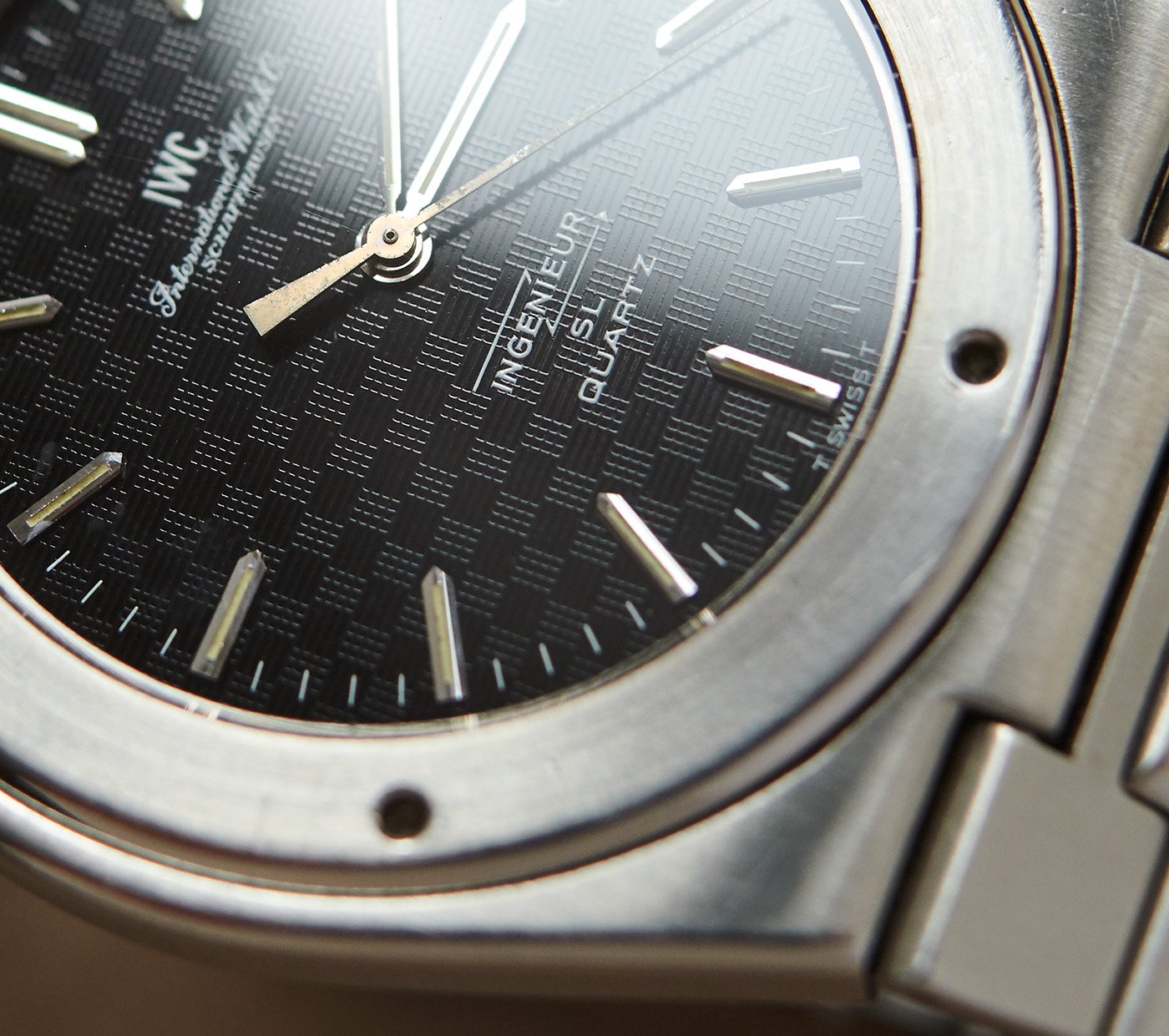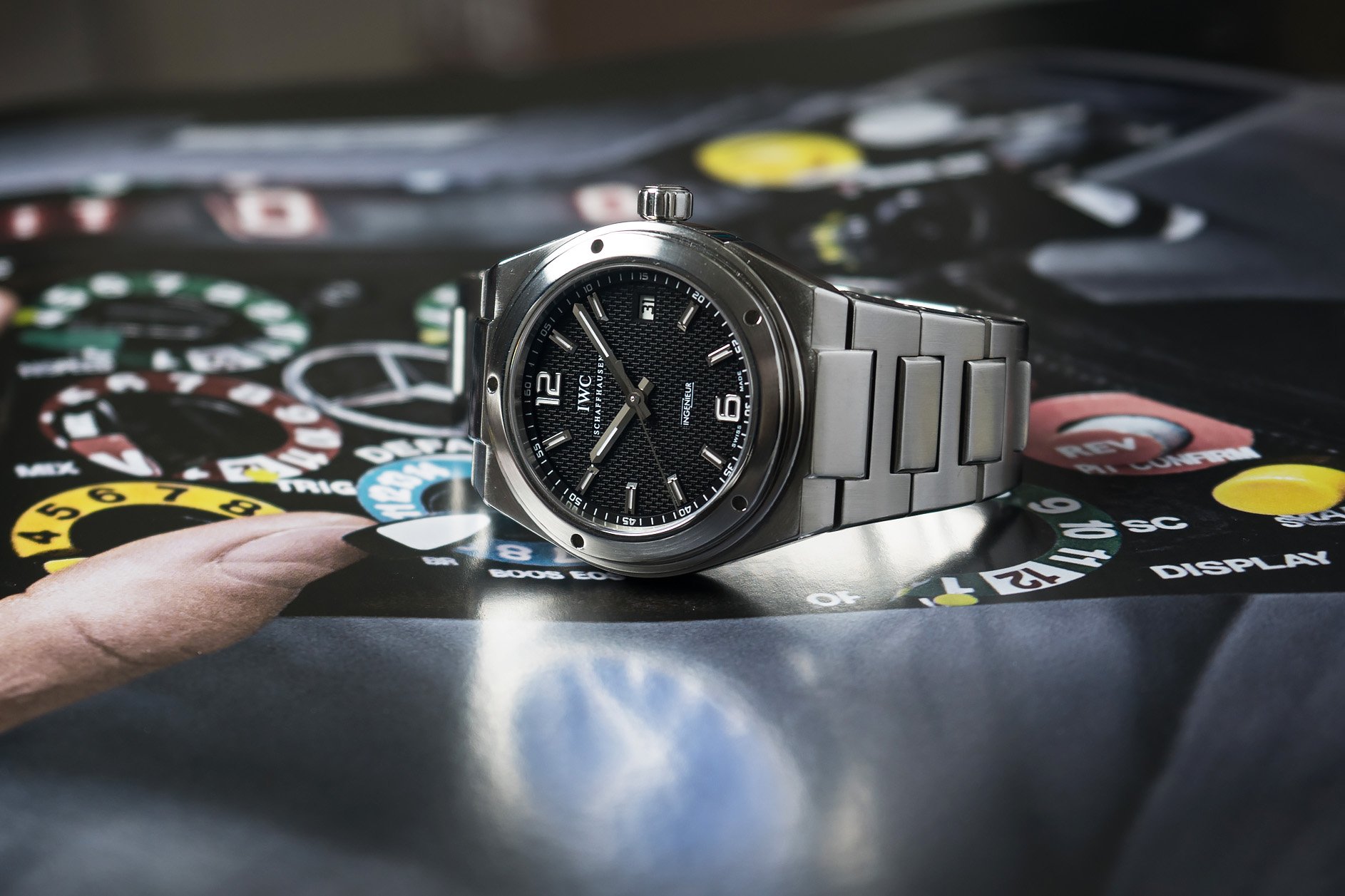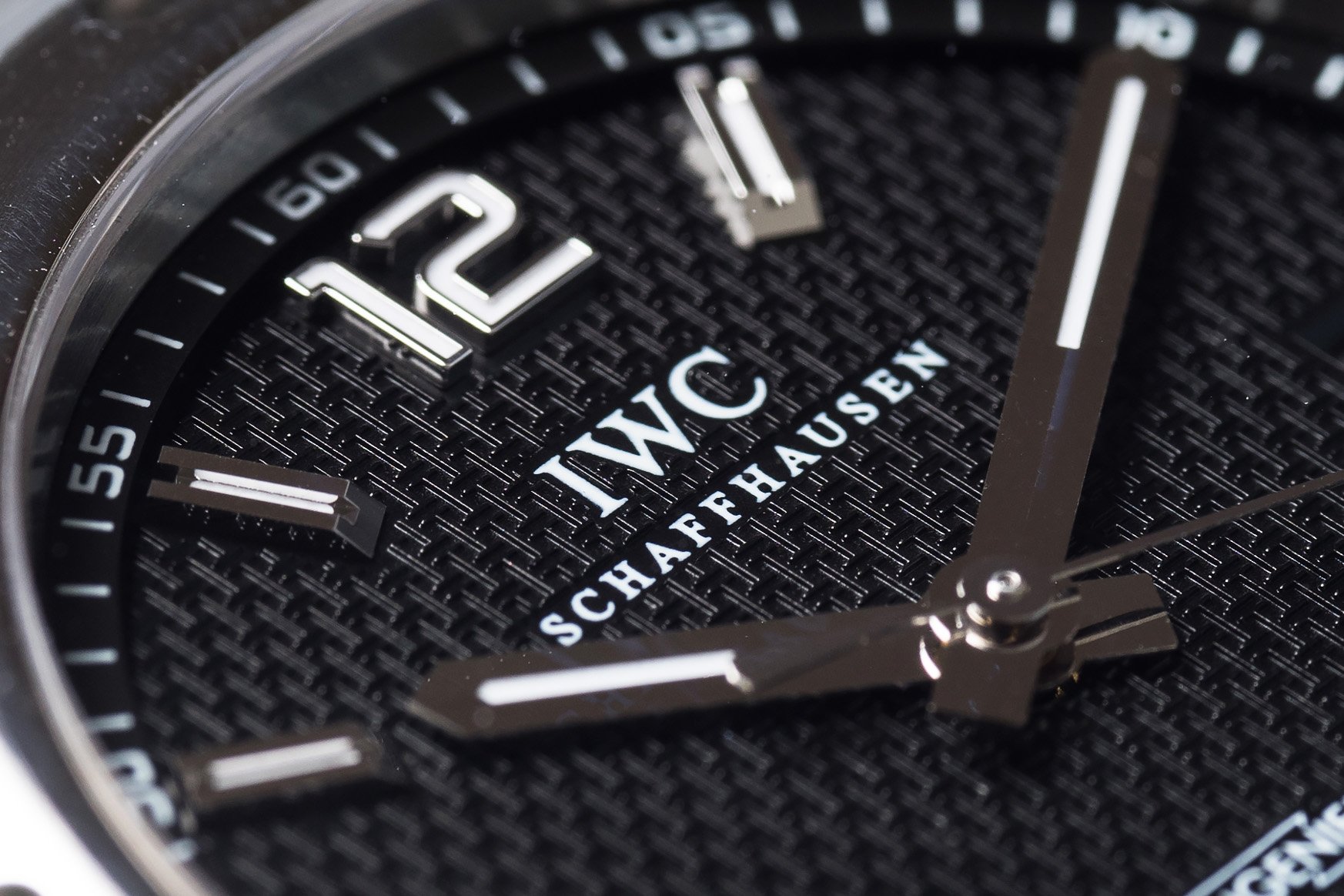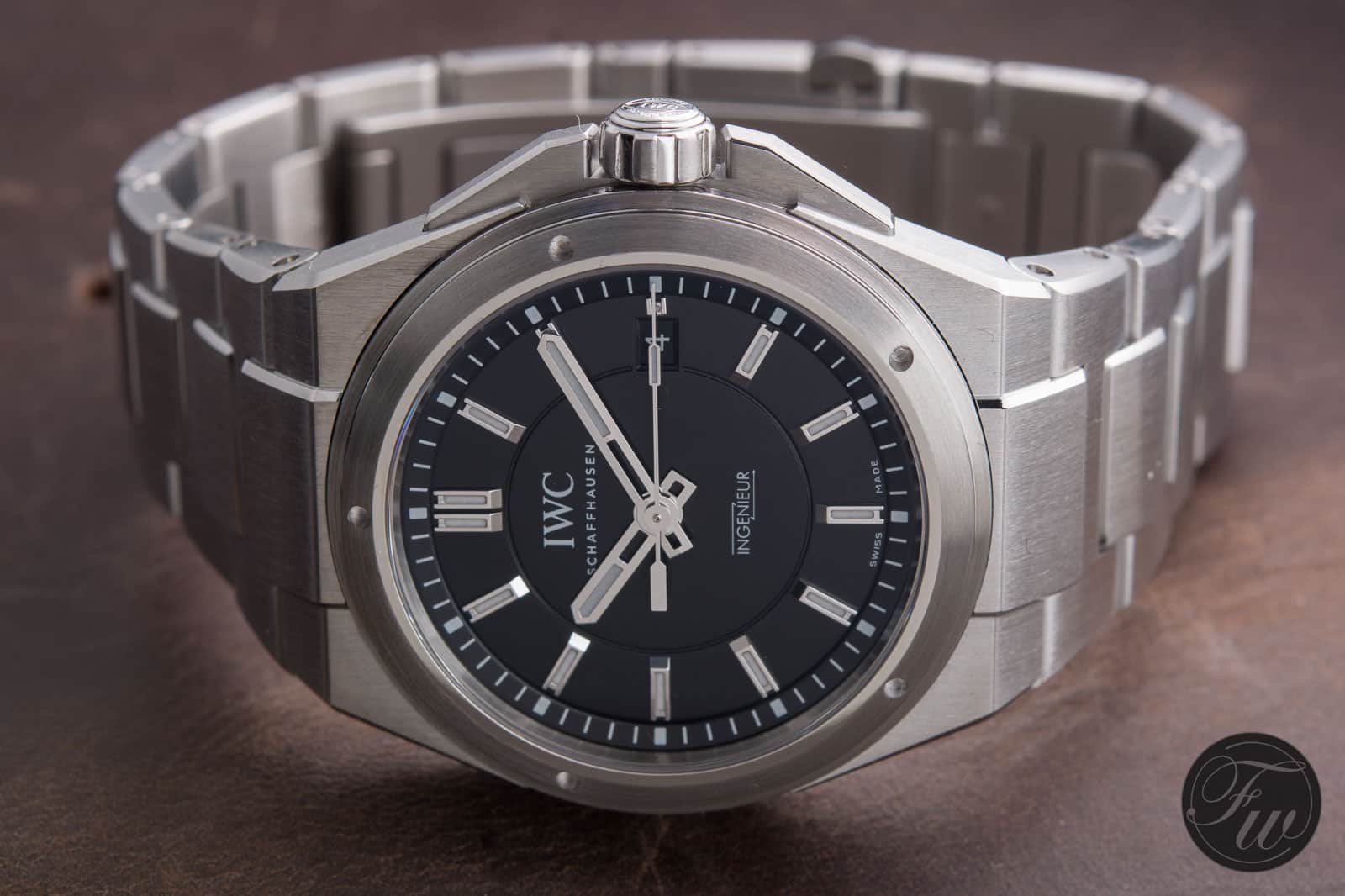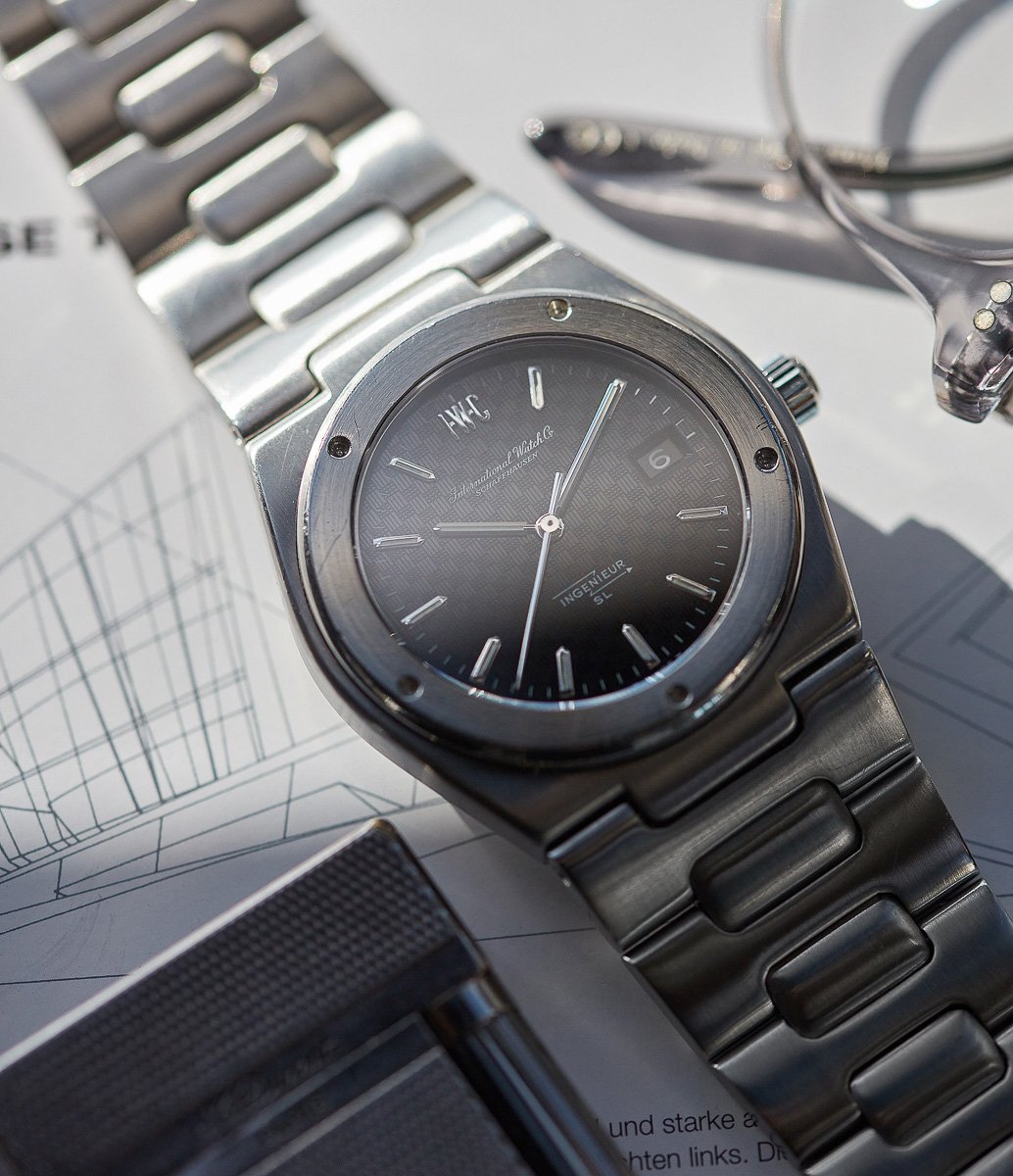Dear IWC, Bring Back The Gérald Genta-Designed Ingenieur SL “Jumbo” Ref. 1832
Every watch enthusiast can think of a great discontinued timepiece that should return to the spotlight in a more modern version. At the Fratello offices, we are no different. It inspired us to come up with a series about watches that the Fratello editors would like to see make a comeback. Some of the watches are iconic, some of them are less popular. But all of them are loved by at least one of our editors. Let’s look at some of our favorites in this series. Jorg kicks off with the IWC Ingenieur SL “Jumbo” Ref. 1832.
In Fratello team discussions, we regularly dive deep into the archives of a brand to talk about some of the watches from the past that we love. As a result, the question, “Wouldn’t it be great if the brand would bring this back?” often pops up. It has become the central theme of this series of articles. Despite our excitement, we don’t expect brands to bring them back. There are often valid strategic and commercial reasons not to bring back the models we will be talking about. But this series is not based on a watch’s commercial success. The series is based on the love that we have for some of the gems of the industry. Jorg kicks off the series in this first installment with the famous IWC Ingenieur SL “Jumbo” ref. 1832.
Gérald Genta’s brilliance
When fellow Fratello editor Lex and I discussed the series a couple of weeks ago, the first watch for the series was a no-brainer for me. I love the IWC Ingenieur that Gérald Genta designed in the 1970s for several reasons. The first and most obvious is the one that is why so many adore Genta’s design tour de force. While the Ingenieur had been part of the IWC collection since 1954, for most watch enthusiasts, the Ingenieur name is synonymous with Genta’s famous trilogy. For me, that is no different.
When I first got into watches, I quickly learned about the design brilliance that made Gérald Genta the most famous watch designer in the world. Having worked in design for two decades, I know how tough it is to convince people to embrace something that feels highly uncomfortable because it is extremely out of the ordinary. That’s why it deserves a ton of respect that Audemars Piguet, Patek Philippe, and IWC dared to release Genta’s defining vision on modern sports watches.
Different roles in the trilogy
As I explained in an article I wrote about my favorite modern Genta-inspired sports watches, Gérald Genta’s brilliance was not just coming up with three iconic designs that the world of watches had not seen before. If you put the Audemars Piguet Royal Oak, the Patek Philippe Nautilus, and the IWC Ingenieur together, you will see the intelligent exploration of basic forms that Genta executed — octagonal for the Royal Oak, square for the Nautilus, and round for the Ingenieur. In doing so, he practically locked the door to design. He threw away the key for every designer trying to be original regarding rudimentary shapes for a modern luxury sports watch.
I love all three of Genta’s creations for different reasons. I think the Royal Oak is the original, the first, the one that truly pushed the boundaries. On top of that, it is visually the most exciting out of the three for me. The unique octagonal bezel, the brilliantly designed and stunning-looking bracelet, the slim overall profile… It’s truly a thing of beauty. The Nautilus, for me, is the most exciting case shape. Whereas the Royal Oak is defined by “just” the bezel, the Nautilus features a case that shines both in its brilliant overall shape as well as all the little details. Combined with the bracelet, it brings a level of refinement that I adore.
My Ingenieur story
It leaves the IWC Ingenieur. While it is the least visually provocative of the three, it did steal my heart in a way the others didn’t. It all started with the Ingenieur name. I love that name because it reminds me of my youth and, more specifically, my father. Nowadays, he is retired and enjoys spending most of his time on the golf course. But my father started his professional life as a mechanical engineer. And “Ingenieur” happens to be the Dutch word for engineer — and a string of other languages. His first two engineering jobs were at the famous Dutch machine factory Stork and a smaller German engineering firm. After that, he decided to switch to the oil and gas industry, where he worked on developing customized systems for oil, gas, and geothermal drilling. It’s where he climbed the ranks and worked the rest of his professional career.
I would often see my dad bring his work back home when I was a young boy. He often brought big rolls of graph paper with the latest technical drawings that he had to work on, and it was always intriguing for me as a 10-year old boy. I had no real clue what he was creating, but I knew he was a mechanical engineer, and to me, these big rolls of graph paper were an indication that he was working on important things. The graph paper, pencils, rulers, and the pair of compasses were magical tools in my boyish fascination. And that fascination with technical development has never left.
Omega not IWC
While my brother definitely inherited my dad’s technical genes, my dad loves disputing that. Whenever a technical job would present itself and he had to help me out, he always reacted grumpily, “It’s not that you don’t understand the technology behind it, you are just not interested enough to put your mind to it.” Over three decades later, let’s say the truth is somewhere in the middle. There is no denying that what he said was at least somewhat true, with me working in the watch industry and writing about mechanical watches every day, right?
During his time at Stork, my dad traveled to the UK for the job. He used the money he saved to reward himself with an Omega Seamaster De Ville when he came back. I have recently told this story in my review of the Sedna Gold Omega Seamaster Professional 300M Chronograph. So when I was growing up, the Omega was the watch on his wrist. It’s a big reason why I love the Omega brand so much. Fast forward to my mid-twenties when my heart started beating faster from seeing all these amazing timepieces. When I first started reading about the Ingenieur in the early 2000s, I quickly realized that the IWC Ingenieur name didn’t start with Genta’s creation but dated back to the 1950s.
An “Ingenieur’s” tool watch
Reading about IWC’s intentions in the 1950s to develop a tool watch for engineers was fascinating. But it was not more special than the story of the Rolex Milgauss or the Omega Railmaster. They are all developed for engineers with anti-magnetic properties to protect the movement from strong magnetic forces. And the first watches with the Ingenieur name were also not special in terms of design. But IWC did use the name to go with their watches, and that was the first critical choice. The next came with the design of Genta’s Ingenieur. I love when a story is integrated into a design without becoming too obvious. As you may have noticed, the guilloché dial pattern of the dial is modeled after graph paper. It took me back to my younger days when I had this boyish fascination with my father’s job. This made the IWC Ingenieur SL Jumbo ref. 1832 a homerun. It’s a fun realization how, years later, these simple memories have the most impact.
Out of all three watches from Genta’s trilogy, the Ingenieur tells the story that is closest to my heart. And while the Seamaster De Ville is my dad’s watch, the Ingenieur SL Jumbo ref. 1832 is the watch I associate with my father’s work. It’s how I saw him, and this watch reminds me of that in a great way. So we can talk about magnificent dials of the Royal Oak and the Nautilus, but they will never be more than great style elements. At the same time, the dial of the Ingenieur tells a very personal story close to my heart.
The IWC Ingenieur SL “Jumbo” ref. 1832
Looking at IWC Ingenieur SL “Jumbo” ref. 1832 today, it still strikes me as a great design. While not as challenging and unique as the Royal Oak or the Nautilus, it still feels special. The 40mm tonneau-shaped case is instantly recognizable with its round bezel with five holes drilled into it to open the watch. The integrated bracelet is not as refined as the two other bracelets from the Genta trilogy. But overall, the watch is also chunkier than the Nautilus and the Royal Oak, so it fits the watch perfectly. The Ingenieur measures 12.5mm in height, making it significantly more substantial than its peers that measure a little over 8mm.
While it might abandon Genta’s design principle of creating an overall slim profile for modern sports watches, IWC did have its list of requirements for the Ingenieur stemming from the initial idea of being an anti-magnetic tool watch for engineers. So Genta had to keep that in mind and sign off on a watch that came with a story already attached. To make it a true Ingenieur, IWC equipped the watch with the anti-magnetic self-winding IWC caliber 8541ES. It featured a Pellaton winding mechanism and came with a date indication at 3 o’clock. The movement was placed inside a Faraday cage to protect it from magnetic forces up to roughly 1,000 gauss. It made the Ingenieur ref. 1832 more than just another Genta creation.
An even better quartz version?
Together with the mechanical version, IWC also released a quartz version of the Ingenieur with ref. 3003 in 1976. It was exactly the same watch as the case design allowed for both a mechanical and a quartz movement. Some Ingenieur owners swapped their mechanical movement for a quartz version, something that was not possible with the second-generation quartz Ingenieur ref 3303. IWC decided to update the movement to the much slimmer IWC quartz Caliber 2250, which was essentially a renamed ETA 955.112.
As a result, IWC had to update the case and dial design, and the brand did that perfectly. As I explained in the Buying Guide of the best IWC watches from the 1980s, the overall balance in the design of the dial and the bezel is optimized. Additionally, IWC also redesigned the bracelet to look better and slightly more refined. But a quartz version does not hold the same emotional value as the original mechanical version. On top of that, the romance for me is in the original version because that’s the one that I read about first and connected to my personal Ingenieur story.
What came after Genta’s Ingenieur
The Genta Ingenieur has never been a great commercial success. With production numbers of both the mechanical ref. 1832 and the quartz ref. 3003 and ref. 3303 well under a thousand pieces in almost a decade, the Ingenieur “Jumbo” wasn’t a big seller. Chasing my preferred Ingenieur SL ref. 1832 means I would have to pay around €30K for one. While it’s nowhere near the vintage Royal Oak and Nautilus prices, it’s still a lot of money. So other, less costly options would be preferred.
IWC tried to keep the legacy of Genta’s Ingenieur alive but with lackluster results. The best option would be the IWC Ingenieur ref. 3227-01 that the brand introduced in 2005 and produced for only four short years. Robert-Jan owned one, and I still remember us picking it up in Amsterdam. I was and have always been impressed by its presence. The design takes great inspiration from Genta’s creation, and it features the great in-house IWC Caliber 80110. But it’s also a bigger watch than the original at 42mm, it’s chunkier at 14.5mm, and overall, it looks less refined with its sharper edges and study bracelet. It’s why the ref. 3227 has always been on my list of possible future buys but never made it to the top of that list.
Wishful thinking
After that, IWC replaced the Ingenieur ref. 3227 with the new generation Ingenieur ref. 3239 that introduced crown guards, a different dial design, and an ETA movement. It just didn’t feel like the Ingenieur I have loved for so long. When IWC discontinued the Ingenieurs inspired by Genta’s 1976 creation, many people were disappointed. I was one of them. Not even because that last generation was necessarily a great successor to Genta’s Ingenieur, it’s more the idea that IWC would discontinue a watch inspired by a legendary design that has become an industry icon. It just didn’t feel right. And what we got in return with the current Ingenieur line completely lacks the character that does the Ingenieur name justice.
It’s a name that means so much more to me than just the name of a watch. To me, it’s a world of memories that gives watch so much more personal value. It’s why I would love nothing more than to see a worthy modern version of that special Ingenieur SL “Jumbo” ref. 1832. I don’t plan on spending €30K on the original, and I firmly believe that IWC has the skills and the creativity to pull it off. Whether it would be a commercial success? I am not sure. And I don’t care. I want to bring my story to life by wearing an IWC Ingenieur. It’s a simple story about a name and a dial but it comes with a world full of personal memories.
Find and follow me at Jorg Weppelink • Instagram.

